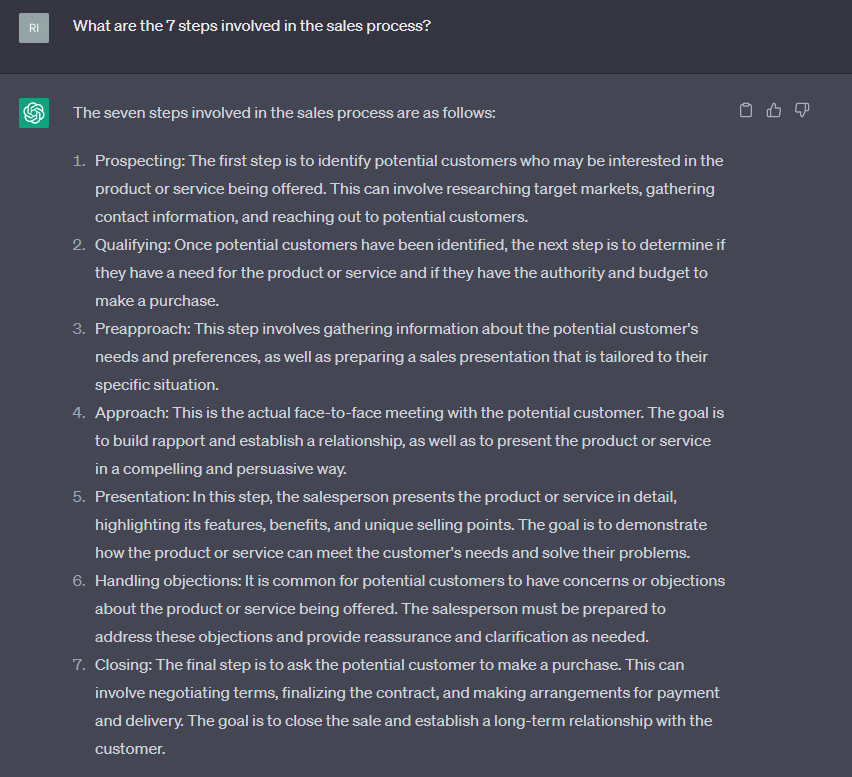
In recent years, generative AI has emerged as a revolutionary technology in the eLearning industry due to its ability to enhance the learning experience for students. As an instructional designer, incorporating generative AI into your content creation can offer numerous benefits such as personalized learning, streamlined course planning, and improved engagement.
However, to fully utilize the potential of Instructional Design and AI, it’s crucial to understand the principles of prompt engineering and how that can be applied to AI-powered eLearning. This comprehensive guide is designed to equip instructional designers with the knowledge and skills needed to effectively integrate generative AI into eLearning course authoring.
From understanding the basics of generative AI to designing practical learning activities, this guide covers everything you need to know to use prompt engineering for instructional design and take your eLearning courses to the next level.
Get ready to revolutionize eLearning creation with the power of generative AI!
IN THIS ARTICLE...
Why use AI for Instructional Design
In the ever-evolving landscape of corporate training, instructional designers are constantly seeking innovative and effective ways to engage learners and deliver personalized learning experiences. With the rise of generative AI, there is now an exciting opportunity to harness the power of AI to improve learner engagement and deliver customized learning paths.
However, to fully leverage the potential of generative AI in corporate training, it is essential to understand prompt engineering – the process of crafting effective prompts that guide AI toward specific learning objectives.
In the following content, we will explore the key principles of prompt engineering for instructional design, using generative AI tools for creating eLearning, and the best practices for applying Artificial Intelligence to corporate training development.
How to use Generative AI for Instructional Design
Generative AI has the potential to transform instructional design by assisting in the creation of course outlines, lesson plans, and training materials.
Here are some key considerations for effectively using generative AI in instructional design:
- Identify the learning objectives: Clearly define the learning objectives and outcomes you want to achieve with generative AI. This will help you select the most appropriate prompts and design effective learning activities.
- Choose the right generative AI tool: There are a variety of generative AI tools available for instructional design, such as content generators, topic summarizers, and language translators. Select the tool that best aligns with your needs.
- Craft effective prompts: Use clear and concise language in your prompts to ensure that generative AI understands your instructions accurately. Avoid jargon and ambiguity and focus on aligning your prompts with your learning objectives.
- Monitor and evaluate performance: Continuously monitor the performance of the content created and evaluate its impact on learning outcomes. Refine and improve the learning activities as needed to maximize the benefits of using generative AI.
- Ensure privacy and ethical considerations: Generative AI in instructional design raises concerns about plagiarism, data protection, and ethical considerations. Ensure that you follow ethical guidelines and comply with copyright law when implementing generative AI in your instructional design process.
By leveraging generative AI in instructional design, you can streamline the development of training materials and create personalized learning experiences for your learners.
What are the First Steps in Using AI for eLearning?
Understanding prompt engineering is the crucial first step to unlocking the full potential of generative AI for instructional design purposes. Creating effective prompts that guide the AI to specific learning objectives is essential to ensure that the content stays focused, relevant, and engaging.
By mastering the art of prompt engineering, instructional designers can harness the power of generative AI to deliver personalized learning experiences, improve learner engagement, and become more efficient.
With the right prompts, AI can become a valuable assistant in the eLearning journey, helping learners achieve their goals more efficiently and effectively.
What is a Generative AI Prompt?
Taking the AI language model ChatGPT as an example, it relies on prompts to generate responses to your input. A generative AI prompt is a written or spoken request that defines the nature of the conversation and directs the AI toward a specific topic or question.
Role of Prompts in Conversations with Generative AI
When communicating with generative AI, effective prompts play a crucial role in ensuring successful conversations, your prompts help to maintain the conversation and keep it on track.
The following are the key principles of prompt engineering that instructional designers should keep in mind when designing prompts for generative AI:
- Clarity: When using generative AI for instructional design, it’s important to prioritize clarity in your prompts. Make sure to use language that is easy for the AI to understand and avoid any ambiguity or unnecessary complexity. Being specific in your prompts can also help ensure that the AI generates content that aligns with your learning objectives.
- Focus: A well-defined prompt should have a clear purpose and focus, guiding the AI toward achieving specific learning outcomes and avoiding tangents or irrelevant responses.
- Relevance: Prompts should be relevant to the learners and the learning objectives. Irrelevant prompts can distract learners and make it difficult for the AI to provide accurate responses. Prompts should be designed to provide personalized feedback and customized learning paths that are tailored to the individual needs of each learner.
Following these guidelines, instructional designers can harness the power of generative AI to create effective and engaging eLearning experiences that help learners achieve their specific learning objectives.
What is Prompt Engineering for Instructional Design?
In the context of Instructional Design and AI, prompt engineering involves crafting effective prompts that help achieve specific learning outcomes, such as mastering a new skill or acquiring new knowledge. Effective prompts must be designed to be clear, concise, and specific, guiding the AI toward providing accurate and relevant responses.
How to Write a Good AI Prompt
Crafting effective prompts is crucial for successful communication with generative AI. Well-crafted prompts should be clear, concise, and unambiguous, to ensure that the AI understands the user’s intent accurately. Using appropriate language and avoiding jargon can also enhance the effectiveness of prompts.
Some points to remember here are highlighted by Open AI in their prompting guide. It details 6 strategies to properly engineer prompts:
- Write clear instructions
- Provide reference text
- Split complex tasks into simpler subtasks
- Give the model time to “think”
- Use external tools
- Test changes systematically
Check out the official ChatGPT prompting guide from Open AI to look deeper into these strategies for effective prompt engineering and help lead you on your prompting journey.
10x Your Prompting Results with One Phrase
Give the model time to “think” – may stand out as an odd thing to do, but… Google released a paper “Large Language Models as Optimizers” that showed Deepmind found the phrase “Take a deep breath and work on this problem step-by-step” which resulted in much better results from prompting.
Techniques for Crafting Effective Prompts
To fully leverage the power of generative AI in corporate training, it is essential to engineer effective prompts that guide the AI toward specific learning objectives. Here are some techniques for crafting effective prompts and utilizing prompt engineering for instructional design:
Avoiding Ambiguity and Jargon
Using ambiguous or highly technical language can confuse the AI and lead to inaccurate or irrelevant responses. To avoid this, it is important to use clear and simple language that is easy for the AI to understand. Avoid using jargon or highly specialized terminology that may not be familiar to the AI or the learners.
Being Specific and Concise
Effective prompts should be specific and concise, clearly articulating the learning objective and guiding the AI in the direction of the desired response. Long, convoluted prompts can be confusing for the AI and make it difficult to achieve the desired outcome. It is important to keep prompts brief and to the point, while still providing enough information to guide the AI towards the desired response.
Aligning Prompts with Learning Objectives
The most effective prompts are those that are aligned with the specific learning objectives of the training program. Before crafting prompts, it is important to clearly define the learning objectives and determine the specific knowledge or skills that learners should acquire. Prompts should then be designed to guide the AI in helping learners achieve these specific learning objectives.
Using Generative AI Tools for Instructional Design
Generative AI tools are becoming increasingly popular in the field of instructional design. These tools can be used to help instructional designers create effective course outlines, lesson plans, and training materials by leveraging the power of AI. Generative AI can assist in creating customized learning paths and personalized content for learners, based on pre-defined needs and learning styles.
Benefits of Using AI in Instructional Design
The benefits of using AI in instructional design are numerous. AI-powered tools can save time and resources, allowing instructional designers to focus on other aspects of the creative process. Generative AI can also assist with writer’s block and customized learning paths, making the learning experience more engaging and effective.
Additionally, Instructional Design and AI can help ensure that the course content is specific and relevant, reflecting industry dynamics and incorporating popular best practices.
Best Practices for Instructional Design and AI
When using generative AI tools and prompt engineering for instructional design, it is important to follow best practices to ensure that the learning experience is engaging and effective.
Some best practices include ensuring that prompts are clear and concise, aligning prompts with learning objectives, and avoiding jargon and ambiguity. Additionally, instructional designers should regularly review and evaluate the AI-generated content to ensure that it is accurate and relevant.
In addition to these best practices, instructional designers should also consider the importance of developing interactive learning activities. Generative AI can be particularly effective in creating interactive activities such as quizzes, example simulations, and personalized learning paths. These activities not only engage learners but also facilitate their understanding of the content.
When using generative AI in instructional design, it’s crucial to consider ethical and legal concerns regarding plagiarism and copyright law. Generative AI tools may use pre-existing content to generate new material, which can lead to issues with attribution and intellectual property rights. As an instructional designer, it’s essential to ensure that the content generated by generative AI tools is not plagiarized and properly attributed. Additionally, it’s vital to comply with copyright law and obtain the necessary permissions when using copyrighted materials. Failing to adhere to ethical and legal considerations can have serious consequences, including legal action and damage to your reputation.
Finally, instructional designers should continuously monitor and evaluate the performance of the training material and its impact on learning outcomes. This involves regularly reviewing and analyzing learner data and feedback to identify areas for improvement and refining the AI-generated content accordingly.
By following these best practices, instructional designers can effectively leverage the power of generative AI to create engaging and effective learning experiences that align with their organization’s training goals and objectives.
Applying Prompt Engineering to Corporate Training
To successfully integrate Instructional Design and AI into corporate training, instructional designers need to apply prompt engineering principles to ensure that the AI-generated content aligns with the learning objectives and is effective in promoting learning.
Applying prompt engineering to generative AI in instructional design can help create effective prompts that lead to engaging and personalized corporate training experiences.
Important Tip: To use these example prompts, simply copy and paste them into your chosen generative AI tool, replacing the elements [within square brackets] to suit your needs.
Here are some key steps to applying prompt engineering for instructional design in corporate training:
Always Use Clear and Concise Prompts
When designing prompts for generative AI tools, use clear and concise language that is easy for the AI to understand. Avoid complex language, jargon, and ambiguity, which can lead to inaccurate or irrelevant responses.
For example, instead of asking…
“What are the ramifications of breaching confidentiality?”
a prompt like…
“Explain why it is important to maintain confidentiality in the workplace”
…is more effective.
Examples of Clear and Concise AI Prompts:
Example 1: "What is the main purpose of the [procedure]?"
Example 2: "How can you apply [concept] in your daily work as a [target job role]?"
Example 3: "What are the [specific number] key features of [product/strategy/skill]?"Define Learning Objectives with AI Prompts
The first step is to define the learning objectives and outcomes that need to be achieved through the training program. This will guide the selection of the appropriate training material and the creation of suitable content.
Ensure that prompts are aligned with the learning objectives of the training program. For example, if the objective is to teach sales techniques, a suitable prompt could be:
“What are the 7 steps involved in the sales process?”
Example AI Prompts for Defining Learning Objectives
Example 1: "What are the [specific number] key benefits of using [product/strategy/skill] in our daily work as a [target job role]?"
Example 2: "What are the [specific number] steps involved in the [process]?"
Example 3: "How does the [concept] relate to our company's values of [defined company values]?"Example Output from ChatGPT:


Align Prompts with Learning Objectives
Your AI Prompts should be aligned with the learning objectives to ensure that the outputs are focused on the intended training outcomes. In corporate training it is important to match your learning objectives with your organization’s goals, keeping that in mind, take a look at the examples below:
Example AI Prompts Aligned to Learning Objectives:
Example 1: "Explain the concept of [topic] and how it applies to our business model of [business model]."
Example 2: "What are the key features of the [product/strategy/skill] and how do they meet our customer's needs of [specific customer needs]?"
Example 2: "How does the [product/strategy/skill] help us to achieve our company's goals of [defined company goals]?"Using AI Prompts to Improve Existing Content
Some simple prompts can be used to take existing content up a notch. For example, if you want to make course titles and descriptions more engaging. Take a look at the examples below and suggested adjectives, then try them out to see which provides the best results for your needs:
Example AI Prompts to Improve Existing Content:
Example 1: "Make the following course title more [adjective]: [copy/paste existing title]"
Example 2: "Make this course description more [adjective]: [copy/paste existing description]"
Suggested Adjectives: Compelling, Enticing, Intriguing, Exciting, Informative.Prompt Engineering for Instructional Designers
Using well-crafted prompts, following the guidelines above and the examples below, instructional designers can easily use AI tools to assist with the design of highly engaging learning material.
Creating Course Outlines with Generative AI
Generative AI can be used to create course outlines that are tailored to the specific needs of learners. Once a knowledge gap is identified, you can use AI to create customized learning paths that help learners achieve their specific learning objectives. Generative AI can also provide recommendations for course content and structure, ensuring that the course is comprehensive and engaging.
Example AI Prompt for Creating Course Outlines:
"Using the learning framework [chosen framework] as a baseline, write an eLearning course outline aimed at [target audience] that provides an effective route to learning [learning objective]."Developing Lesson Plans with Generative AI
Generative AI can assist in developing effective lesson plans that align with learning objectives and are tailored to the needs of individual learners. If you have established specific areas of strength and weakness, use Instructional Design and AI to provide personalized recommendations for lesson content and structure. By leveraging the power of AI, instructional designers can create lesson plans that are engaging, effective, and personalized to the needs of each learner.
Example AI Prompt for Creating Lesson Plans:
"Develop a personalized lesson plan aimed at [target audience] that tells a compelling story about how [topic] can be used to [outcome], showing that [learning objective]."Generating Training Material with Generative AI
Generative AI can assist in drafting an overview of training material that is effective and engaging. AI can analyze a chosen industry and focus on best practices to ensure that the training material is comprehensive and relevant to the needs of learners. AI can also help ensure that the material is engaging and effective, by providing recommendations for content structure and presentation.
Example AI Prompt for Creating Training Material:
"Provide [specific number] examples of specific training components that I should write that are aimed at [target audience] to achieve [learning objective]. Use vivid details and [adjective] language to create a connection with the reader and showcase the effectiveness of this content."Time-Saving Use Cases for Generative AI in Instructional Design
Olivia Tucker, a valued member of our ID team has been experimenting with engineering prompts for instructional design tasks, She has found some very useful, time-saving ways of utilizing this technology to help with some of the tasks that she does.
Here are some examples that Olivia shared of how she uses AI prompts in her day-to-day work:
1. Create a Specific Task Outline
"Create a succinct outline for applying basic text formatting in Microsoft Word" If the outline generated is too long…
"Condense the outline to 5 objectives, including parts 1 and 2"2. Summarize Features Using Grammatical Voice
"Create an informative but brief paragraph summarizing the Styles feature in Microsoft Word using the active voice"3. Generate Bullet Point Lists
"Create 5 bullet points summarizing the advantages of using Styles in Word"More Ways to Use Generative AI for Training
From a recent post on LinkedIn by Kevin Alster of Synthesia, here are some more ideas of ways that Instructional Designers and Training Administrators can use Generative AI to assist them in their work:
- Reformatting virtual training topics/notes into other formats
- Rewriting bios/intros/hooks for conferences/training content
- More nuanced feedback suggestions for problems
- Writing out personas for scenarios that allow learners to fail in interesting ways
- Generating activities/icebreakers moving from online to in-person
- Brainstorming learning activities for different performance objectives
- Questions for discussion guides and job aids
Ethical Considerations and Best Practices
When using generative AI in instructional design, it is essential to consider the ethical implications and comply with copyright law to ensure that the material being produced is original and ethically sound. Here are some best practices to follow:
- Avoid plagiarism: Generative AI can easily generate content that may be identical or similar to existing material. It is essential to ensure that the generated content is original and not plagiarized. One way to achieve this is by using plagiarism detection software.
- Comply with copyright laws: It is important to comply with copyright laws and obtain permission before using third-party content. Using copyrighted material without permission is a violation of the law and can result in legal consequences.
- Review and evaluate AI-generated content: It is crucial to review and evaluate AI-generated content regularly to ensure that it is accurate, relevant, and free of biases. By doing so, you can identify any errors or inaccuracies and make the necessary changes to ensure that the content is of high quality.
By following these best practices, instructional designers can create ethically sound and original content while complying with copyright laws and ensuring data protection and privacy for learners.
Maintaining Ethical Practices in eLearning
To uphold ethical standards while using generative AI in eLearning, instructional designers must focus on avoiding bias and ensuring transparency and accountability.
Biases in generative AI can be mitigated by utilizing diverse training data, monitoring for biases, and implementing human review. Transparent practices involve disclosing the use of AI, explaining the decision-making process, and providing feedback mechanisms for learners.
By incorporating these practices, Instructional Design and AI can create an ethical eLearning environment that promotes inclusivity, fairness, and responsible use of generative AI.
Avoiding Bias in Generative AI
When utilizing generative AI in instructional design for eLearning, it is crucial to be aware of and actively address potential biases that may arise in the AI-generated content. Bias can stem from the training data used to train the AI model or from inherent biases in the algorithm itself.
To maintain ethical practices, consider the following:
- Diverse and representative training data: Ensure that the training data used to develop the generative AI model is diverse and representative of the learner population. By incorporating a wide range of perspectives, cultures, and backgrounds, instructional designers can mitigate the risk of perpetuating biases in the generated content.
- Regular evaluation and bias monitoring: Continuously assess the output of the generative AI system to identify and rectify any biases that may emerge. Monitor the responses and ensure that they align with ethical standards and promote inclusivity and fairness.
- Human review and intervention: Implement a system for human review and intervention to review the AI-generated content for any potential biases. Human oversight can help identify and correct any unintended biases that may have been embedded in the generative AI system.
Ensuring Transparency and Accountability
Transparency and accountability are essential when incorporating generative AI in eLearning. Learners should be aware that they are interacting with AI-based systems and understand the limitations and capabilities of the technology.
Consider the following practices:
- Clear disclosure: Provide clear and prominent disclosure to learners that they are engaging with AI-generated content. Inform them about the purpose, functionality, and limitations of the generative AI system to foster trust and transparency.
- Explain the decision-making process: Communicate how prompts are generated and how the AI system processes and generates responses. This transparency helps learners understand the reasoning behind the AI-generated content and fosters a sense of accountability.
- Feedback mechanisms: Establish mechanisms for learners to provide feedback on the AI-generated content. This allows them to report any concerns or issues they may have encountered, promoting accountability and continuous improvement.
By actively addressing biases in generative AI and ensuring transparency and accountability, instructional designers can maintain ethical practices in eLearning. This fosters a positive and inclusive learning environment while leveraging the benefits of generative AI for enhanced instructional design outcomes.
Generative AI and Prompt Engineering for Instructional Design
In conclusion, generative AI tools offer immense potential for enhancing the effectiveness and efficiency of instructional design in corporate training.
By applying prompt engineering principles, instructional designers can create high-quality prompts that align with learning objectives and engage learners. Additionally, by following ethical considerations and best practices such as avoiding plagiarism, adhering to copyright laws, and respecting privacy, instructional designers can ensure that using generative AI in eLearning is ethical and responsible.
With the right approach and tools, Instructional Design and AI can revolutionize how corporate training is designed and delivered, leading to better learning outcomes and improved employee performance.
Intellek (formerly TutorPro) is a founding member of the learning technology industry. With a presence in the USA, UK, Canada, and the EU – for over 30 years we have pioneered the development of cutting-edge eLearning software and online training solutions, with a large and diverse portfolio of international clientele.
Disclaimer: We use all the tools available including generative AI to create relevant and engaging content.





